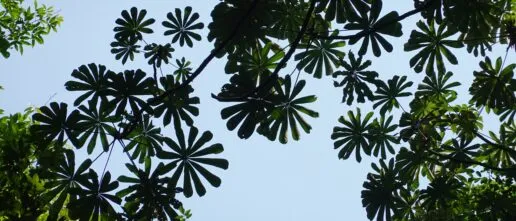Communications Biology (2025)
Understanding how environmental factors influence forest photosynthesis is crucial for predicting their responses to climate change. Three key photosynthetic processes are frequently considered when seeking to understand plant photosynthesis: light availability and electron transport; air dryness and water transport; and CO2 concentration and carboxylation1. Plants’ capacities in these photosynthetic processes vary considerably along environmental gradients2,3,4,5. Recently, many efforts have been made to propose universal rules to explain worldwide plant photosynthetic patterns. For example, “optimality theory” was developed with the assumption that plants can optimize photosynthesis and minimize maintenance costs according to their living environments, which was used recently to provide a universal prediction of plant photosynthesis under different growing environments6,7,8,9,10,11.

